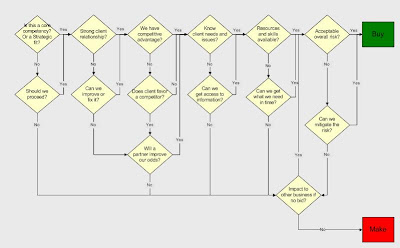
- Product/Service innovation
- Quality of work
- Variety or range of solutions
- After Sales Service (Ex: HP)
- Parent brand association (Ex: Corning getting into telecom)
- Relationships (Ex: Intel and Microsoft)
- Natural affinity (Ex: Healthcare and Pharma)
While there could be some more, I have listed what I thought are important for discussion. What is more important I think is the consistency in the company's differentiation. Once the strategy is defined, it is very important that the company work's consistently on the differentiators. Obviously, it is impractical to differentiate on all the dimensions or only one dimension but to at least 2 dimensions gives the company options when competing.
While many B2B companies do some advertising for branding, they don't consider advertising to be their core strategy. "Word of mouth" or "Customer References" are most important than advertising in B2B branding. So the solution for B2B branding is primarily a two step approach.
- Differentiation strategy: Align every function or department in the company to focus on the differentiators. (Ex: Innovation and relationship)
- Consistent execution: to ensure Customers experience the differentiation.
This will lead to word of mouth and consequently the brand the B2B company wants to create.





